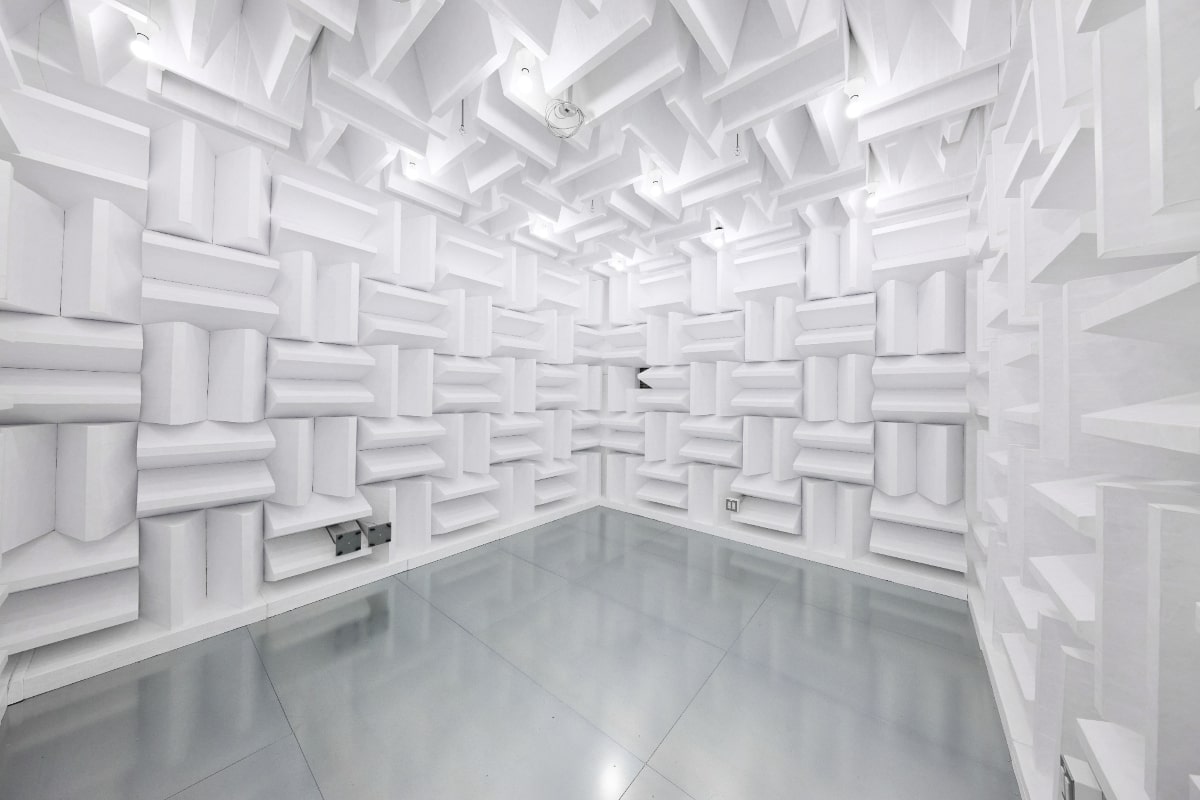What is a Dry Source in Acoustics? Understanding Sound Power and Its Applications
03/15/2025

MFAC / MSAC
In the world of acoustics, two essential concepts are “dry source” and “sound power.” While they may seem similar at first glance, their purposes and measurement methods are quite different.
This article provides a clear explanation of their differences and commonalities.
What is a Dry Source?
A dry source is a term used in acoustics and music production, referring to the original sound without any added effects or processing. For example, the natural sound of a musical instrument or an unprocessed vocal recording is considered a “dry source.” In contrast, sounds that have been altered with effects such as reverb, echo, or delay are referred to as “wet sources.” A dry source is a recording that preserves the original sound quality without additional modifications.
In environments like anechoic chambers and semi-anechoic chambers, which provide a free-field (sound-reflection-free) setting, sound power is typically measured. The measured sound in these environments can also be considered a dry source, as the absorbing materials on the walls, ceiling, and floor minimize sound reflections, allowing for the measurement of pure direct sound.
What is Sound Power?
Sound power refers to the total amount of acoustic energy emitted by a sound source per unit of time, typically expressed in decibels (dB).
The sound power level (Lw) is calculated using the following formula:

Where:
- Lw: Sound power level (dB)
- Lpf: Corrected surface sound pressure level (considering background noise and environmental corrections)
- S: Surface area of the measurement environment (m²)
- S0: Reference area (1 m²)
For sound power measurements, the inverse square law must hold. This law states that sound energy decreases proportionally to the square of the distance from the source. In theory, when the distance doubles, the sound power is reduced to 1/4, and the sound pressure level decreases by -6 dB.
ISO Standards for Sound Power Measurement
ISO 3744 and ISO 3745 specify methods for measuring sound power in anechoic chambers, incorporating an environmental correction factor called K₂ to ensure measurements can be conducted in free-field or semi-free-field conditions.
- Anechoic chamber (ISO 3745): K₂ ≤ 0.5 dB (near-perfect free-field conditions)
- Semi-anechoic chamber (ISO 3744): K₂ ≤ 4 dB (allows some reflections)
What is the K₂ Environmental Correction Factor?
K₂ is a correction factor used to compensate for the effects of reflections and absorption in a measurement environment.
In an ideal free-field environment, sound attenuates according to the inverse square law. However, real-world measurement conditions introduce reflections from walls and ceilings, requiring K₂ to correct these influences.
The less ideal the measurement environment, the larger the K₂ value. Accurate measurements require appropriate compensation using K₂.
Dry Source vs. Sound Power: Key Differences
Although both terms relate to sound, they serve distinct purposes in acoustic measurement and analysis.
| Category | Dry Source | Sound Power |
|---|---|---|
| Definition | Pure sound without reverberation or reflections | The total acoustic energy emitted per unit time |
| Measurement | Direct recording in anechoic or low-reflection spaces | Calculated based on sound pressure measurements (ISO 3744/3745) |
| Main Uses | Acoustic analysis, sound design, recording | Noise evaluation of machines and equipment, product testing |
| Measurement Environment | Anechoic chamber, semi-anechoic chamber | Anechoic chamber, semi-anechoic chamber |
Common Characteristics
- Both are measured in dead spaces (recording booths, anechoic/semi-anechoic chambers).
- Both aim to eliminate reflected sounds to assess the pure characteristics of the sound source.
Applications of Dry Sources
Music & Sound Design
- Vocal and instrument recording (without room reverb)
- Foley sound effects for games and films
- AI speech recognition training data collection
Technology & Research
- Sound source separation techniques (noise reduction)
- Acoustic simulation data
- Speaker frequency response measurement
Applications of Sound Power
Industry & Noise Measurement
- Noise evaluation of home appliances (air conditioners, washing machines, refrigerators)
- Noise testing for automobiles and aircraft
- Noise management for industrial and construction equipment
Research & Development
- Acoustic property evaluation in product development
- Measurement of sound diffusion and directivity
- Quiet design (e.g., noise cancellation technology)
Conclusion: Understanding the Differences Between Dry Source and Sound Power
Dry Source
| Purpose | Capturing pure sound by eliminating reflections and reverberations |
| Uses | Music production, AI training, acoustic analysis |
| Measurement Environment | Anechoic chamber, semi-anechoic chamber |
Sound Power
| Purpose | Measuring the amount of acoustic energy emitted from a source |
| Uses | Noise measurement for machines and appliances, product development, quiet design |
| Measurement Environment | Anechoic chamber, semi-anechoic chamber (ISO 3744 / 3745) |
Although both are measured in dead spaces such as anechoic chambers, their roles are fundamentally different.
Understanding these differences ensures accurate measurement and analysis in the appropriate environments.
Acoustic technology plays a vital role in many aspects of our daily lives.
By acquiring the right knowledge, we can contribute to a better acoustic environment!